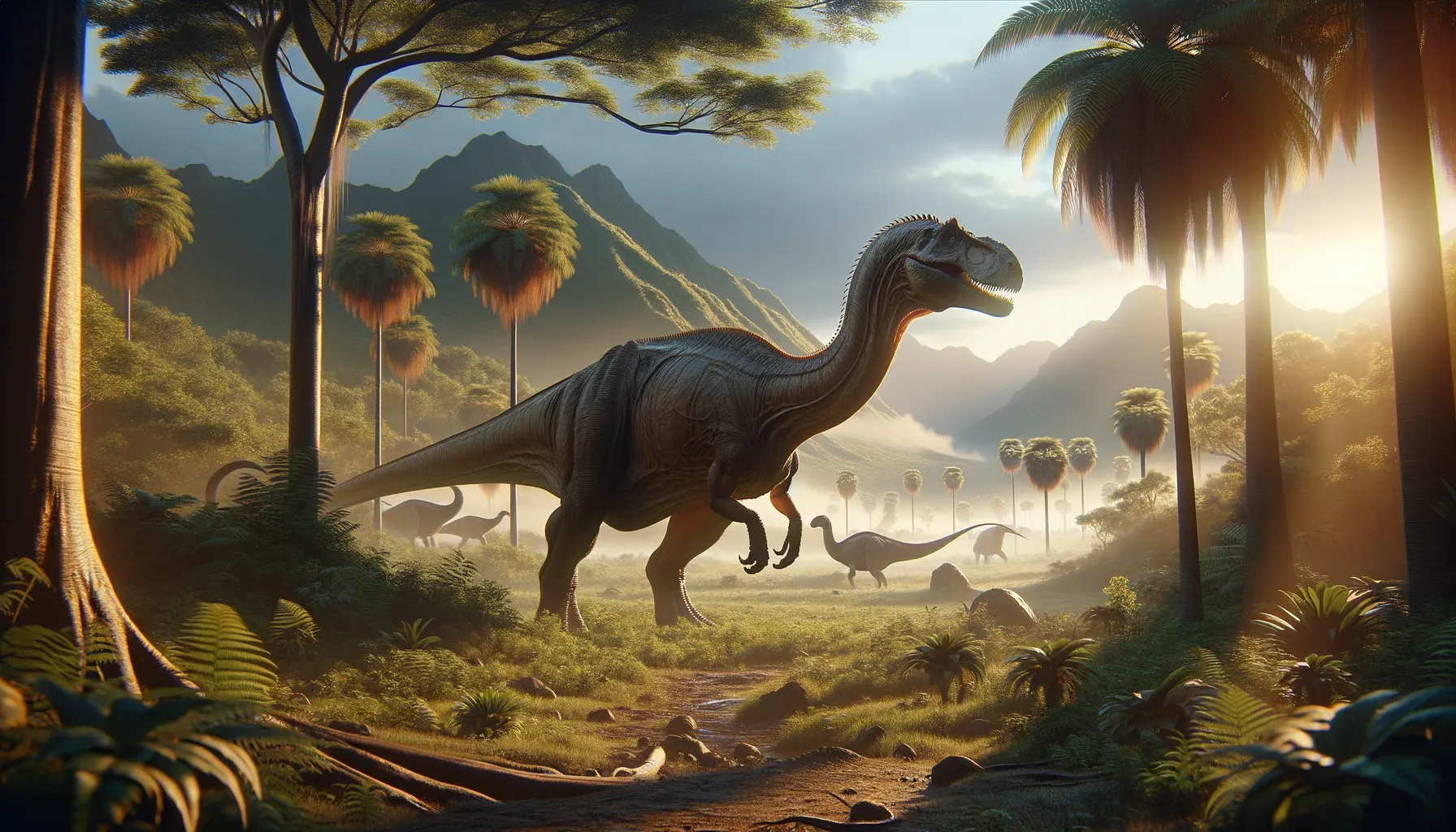
Riojasaurus
A gentle giant of the Late Triassic plains.
Period
Triassic
Length
Measured about 33 feet long.
Height
Stood around 12 feet tall.
Weight
Weighed up to 5 tons.
Riojasaurus was a large herbivorous dinosaur that roamed the earth during the Late Triassic period. It is part of the sauropodomorph group, characterized by its long neck and tail, which helped it reach high vegetation. Though not among the fastest dinosaurs, its large size deterred some predators. Its fossil discoveries provide insight into early sauropod evolution, helping to bridge the gap between older and later more advanced species.
Diet
Riojasaurus was herbivorous, primarily feeding on plants. Its long neck enabled it to reach into trees or tall vegetation. This diet helped maintain its massive size, requiring significant vegetation intake.
Hunting
As a herbivore, Riojasaurus did not hunt for prey. Instead, it grazed through its environment, consuming various types of plants. Its size offered protection rather than relying on predation tactics.
Environmental challenges
Living during the Late Triassic, Riojasaurus faced fluctuating climates. The period experienced transitions from dry to wet seasons, impacting vegetation availability. Predators of the time, although smaller, posed occasional threats. Competition for food with other herbivores influenced its social and migratory patterns.
Speed
Slow-moving, likely due to its massive size.
Lifespan
Estimated to be 50-70 years.
First discovery
Discovered in Argentina in the 1960s.
Fun Facts
- Riojasaurus lived during the Late Triassic period, around 210 million years ago.
- Despite being a large dinosaur, Riojasaurus was a herbivore, meaning it only ate plants.
- It belonged to a group known as sauropodomorphs, which are ancestors of the gigantic sauropods.
- Riojasaurus was named after the La Rioja Province in Argentina, where its fossils were first discovered.
- This dinosaur likely walked on all fours, but could have reared up on its hind legs to reach higher vegetation.
- Riojasaurus is estimated to have been around 10 meters (about 33 feet) long.
- Unlike many later dinosaurs, Riojasaurus had relatively short necks for its size.
Growth and Development
Riojasaurus likely experienced steady growth to achieve its large size. Growth rings in bones suggest seasonal growth cycles. The transition from juvenile to adult involved changes in bone structure to support its massive body. It likely took several years to reach full size, with young staying close to adults for protection.
Habitat
Riojasaurus inhabited what is now South America, specifically in today’s Argentina. During the Late Triassic, its environment included semi-arid regions with diverse plant life. Forested areas allowed it to utilize its long neck for feeding. Open plains where it roamed were likely dominated by other large herbivores.
Interaction with other species
Riojasaurus lived alongside various other dinosaur species, including early theropods. Its size deterred many smaller predators. Likely coexisted with other herbivores, competing for food resources. Social behaviors were prompted by this competition, possibly leading to herding instincts.
Natural lifespan
The natural lifespan could reach up to 70 years in favorable conditions.
Reproduction
Reproduced by laying eggs, like many dinosaurs. Clutches contained several eggs, likely buried for protection. Young would have been vulnerable; thus, parental protection was probable. Group behaviors may have supported raising offspring collectively.
Social behaviour
Evidence suggests Riojasaurus may have lived in groups. Herding offered protection from predators and facilitated movement in search of food. Social dynamics possibly included hierarchical structures based on age or size. Communication likely through vocalizations or visual signals.
Fossil locations
Notable fossil finds have been primarily in Argentina. Locations such as the La Rioja province have provided significant remains. These fossils have been crucial in understanding Triassic ecosystems. The discoveries aid in studying early sauropodomorph evolution patterns.
